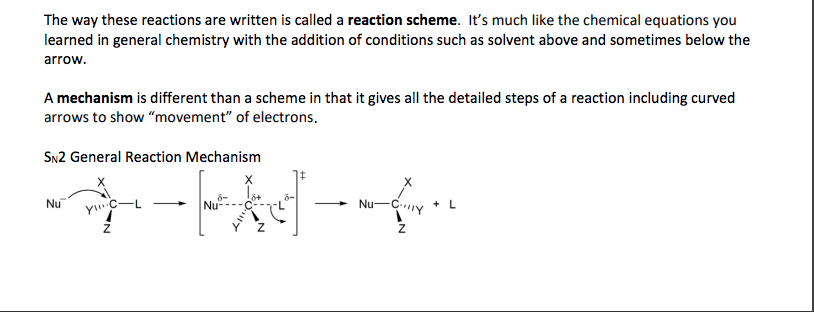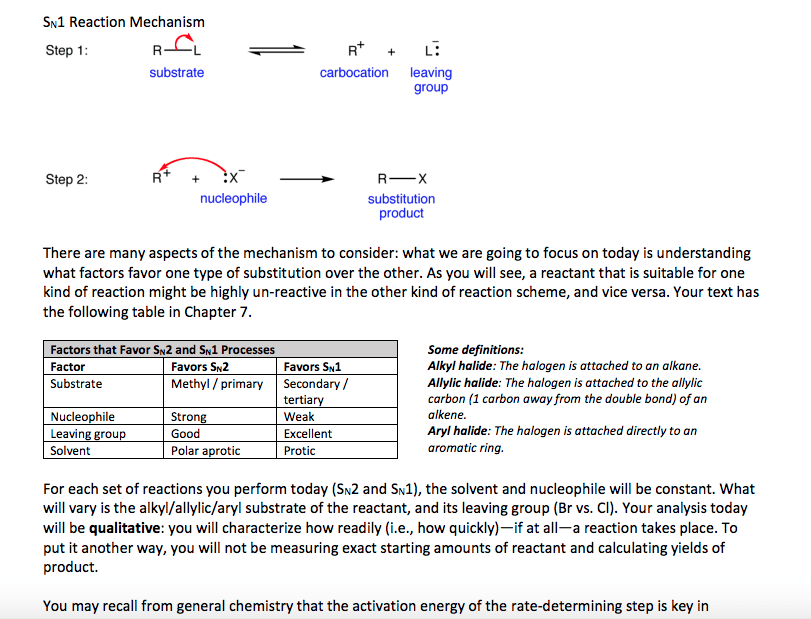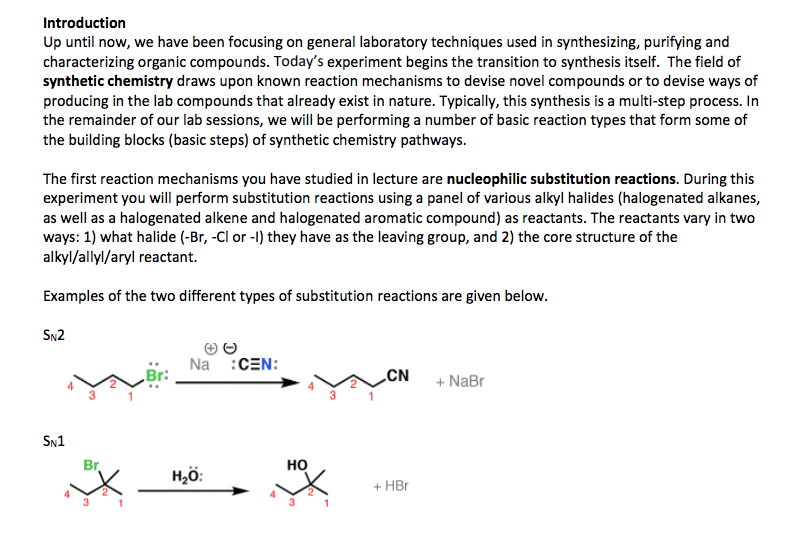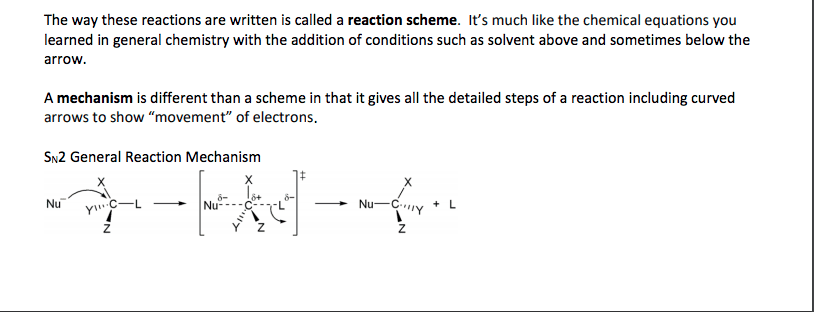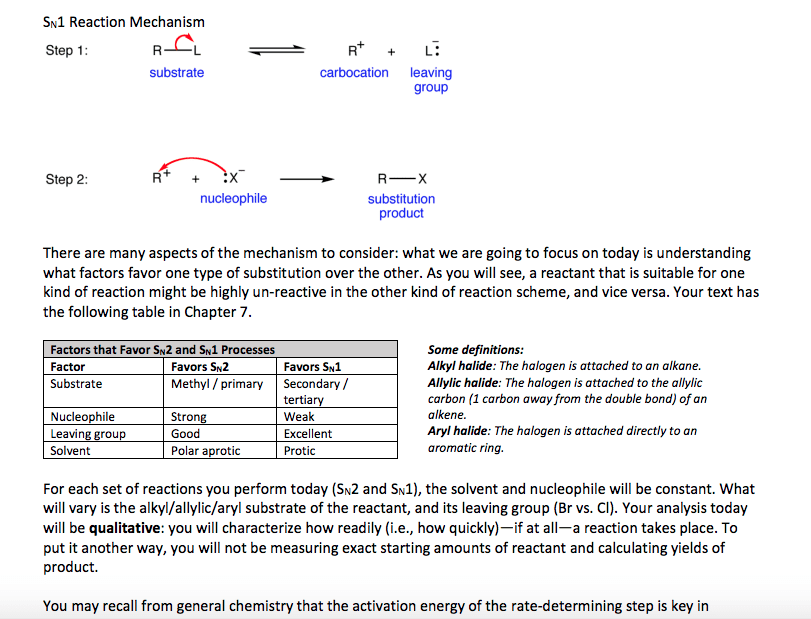01:160:307 Lecture Notes - Lecture 4: Methylamine, Thermodynamic State, Conjugate Acid

1
ORGANIC CHEMISTRY 307
Fall 2017
Lecture Notes IV
Chapter 4
R. Boikess
One of our major focuses this year will be the study of how and why
organic reactions take place. We will learn to write reaction mechanisms,
which are the “how.” We will also seek to predict chemical behavior, the
“why.” Both of these goals require an understanding of chemical principles.
Our approach will require us to apply some of the basic chemical knowledge
you learned in General Chemistry. Of course, it all starts with the electronic
structure of organic species, which you should have firmly under control by
now.
Remember chemical reactions result from breaking and making of bonds.
Let’s start by looking at one of the most general and straightforward
reactions in chemistry, the reaction of an acid and a base.
I. Acids and Bases
Remember the problems you had understanding this topic. It is
one of the more difficult ones in Gen Chem. Acid/Base chemistry
is very important in Orgo. But it should be much easier for you
now than it was in Gen Chem. We shall consider only a few of
the aspects of acid/base chemistry presented in Gen Chem and
we shall even make some simplifications in our approach to
those. Accordingly you are probably better off starting all over
again with this topic, rather than trying to go back and review it
in your Gen Chem book. This topic is redeveloped the way we
will need it in Chapter 3 of CP, as well as in Chapter 4 of BF.
Use this material to relearn acid/base chemistry.
Let’s consider some of the differences in the approach to
acid/base chemistry between Orgo and Gen Chem.
1. In Gen Chem we used KA and KB (and pKA and pKB).. Here
we will use only KA (and pKA) for all situations: neutral
acids and the charged conjugate acids of neutral bases. For
find more resources at oneclass.com
find more resources at oneclass.com

2
example we will use KA of NH4+ and RNH3+ and not KB for
ammonia or the amines.
2. In Gen Chem almost all acid base chemistry took place in
water. In Orgo we will encounter a range of solvents. So we
want to think of acids and bases in the most general way.
3. Brønsted acids and bases. Just remember, A Brønsted acid
is a proton donor. So it will generally be a species in which
a hydrogen is bonded to an electronegative atom. The
resulting polar bond can readily dissociate (because it is
polar) to give two ions H+ and Y-. But since free protons
(H+) can never exist in condensed phases, there must be
something to accept the proton. A proton acceptor is a
Brønsted base.
So the emphasis in the Brønsted theory is on pairs of
substances. There is the acid, which is the proton donor,
and the base, which is the proton acceptor.
a. Conjugate Pairs
When an acid transfers a proton to a base, what is left
behind is a species that is a base. Why? Because this
species is formed by proton donation, and could always
accept the proton back. This base is called the conjugate
base of the acid. We think of a conjugate acid-base pair, as
two substances related to each other by the presence (acid)
or absence (base) of a proton.
In the same way, when a base accepts a proton, it forms an
acid, which could give back the proton. This acid is called
the conjugate acid of the base. Again we have a conjugate
acid-base pair.
How do you know which is the acid and which is the
conjugate base or which is the base and which is the
conjugate acid. The use of the word conjugate is completely
arbitrary. It refers to the species on the right of the equation.
So when an acid donates a proton we form its conjugate
base. When a base accepts a proton we form its conjugate
acid.
So there are actually two pairs of substances involved in a
Brønsted acid-base reaction; they are two different
find more resources at oneclass.com
find more resources at oneclass.com

3
conjugate acid/base pairs. The reaction is one in which a
proton is transferred from the acid of one pair to the base of
the other pair.
We can summarize these relationships with the following
very general equilibrium reaction:
HA + B A- + BH+
Notice that the actual charges might be different. For
example if we start with an acid with a positive charge such
as methyl ammonium ion, CH3NH3+, then its conjugate
base, methyl amine, CH3NH2, is neutral. Or if we start with
a base that has a negative charge, such as formate ion,
HCO2- then its conjugate acid formic acid, HCO2H is
neutral. But very often we will start with a neutral acid and
a neutral base.
b. Strength and pKA
The idea of acid strength (and indirectly base strength) will
be a very important one for us. A strong acid is one that is
very good at donating a proton; a weak acid is not as good.
A strong base is very good at accepting a proton; a weak
base is not as good. It is very useful to be able to express
“strength” in a quantitative way. The method we will use
for this purpose employs K, an equilibrium constant, and in
particular the equilibrium constant of the above very
general reaction.
Suppose we want to compare the acid strengths of two acids
HA1 and HA2. We allow each to react with the same base,
B, in the above reaction, and measure the K of the reaction
for each. The one with the larger K is the stronger acid. If
the K for HA1 is 102 greater than for HA2, then we say that
HA1 is 100 times stronger the HA2.
Now think about the equilibrium proceeding in the other
direction. This time let’s think about A1- and A2- reacting
with the same acid, BH+. You can predict that A1- will have
a K 102 smaller than A2- .
In other words the strengths of the two members of a
conjugate acid base are connected. The stronger the acid,
the weaker its conjugate base. The stronger the base, the
find more resources at oneclass.com
find more resources at oneclass.com
Document Summary
One of our major focuses this year will be the study of how and why organic reactions take place. We will learn to write reaction mechanisms, which are the how. we will also seek to predict chemical behavior, the. Why. both of these goals require an understanding of chemical principles. Our approach will require us to apply some of the basic chemical knowledge you learned in general chemistry. Of course, it all starts with the electronic structure of organic species, which you should have firmly under control by now. Remember chemical reactions result from breaking and making of bonds. Let"s start by looking at one of the most general and straightforward reactions in chemistry, the reaction of an acid and a base: acids and bases. Remember the problems you had understanding this topic. It is one of the more difficult ones in gen chem. But it should be much easier for you now than it was in gen chem.



